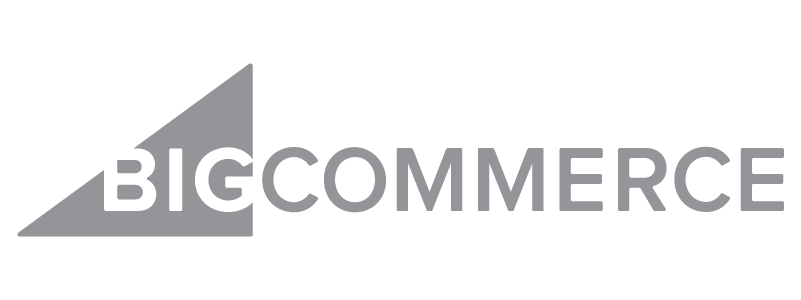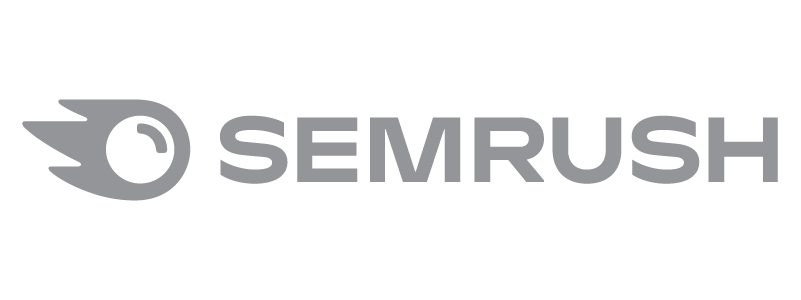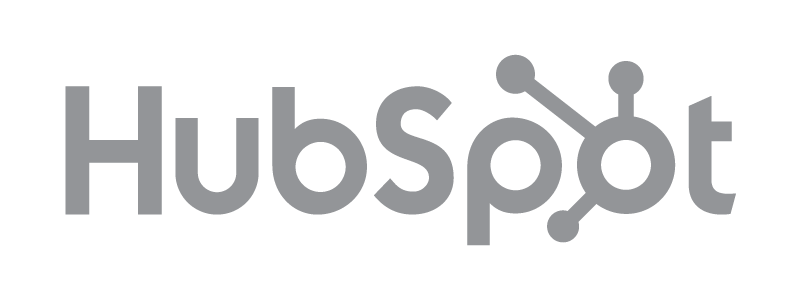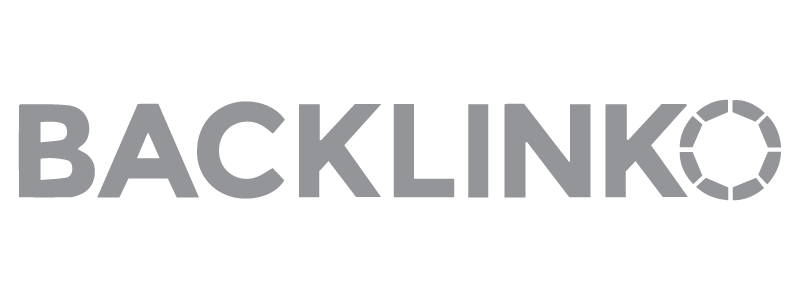Tired of seeing big ecommerce brands like Amazon outrank you in Google? Just because you don’t have billions to spend on marketing doesn’t mean you can’t be number one! It’s not impossible, but it takes hard work and perseverance.

If you want to haul your site up from the dredges of the deep, keep reading!
What Is Ecommerce SEO?
SEO, or Search Engine Optimization, is the practice of creating web pages that rank well in search engine results. This can significantly impact organic traffic to your site as more people will click your link the closer you are to the top.
SEO for ecommerce websites is the same idea, except optimization strategies are aimed at online store pages. This way, shoppers searching for ecommerce products like yours are more likely to find you in the results.
For example, if someone does a Google search for the “best home office printer” and you have a well-optimized page with the primary keyword “best home office printer,” your website will likely show up on the first page of the search results. This dramatically increases the chances of that shopper clicking on your page and buying a printer from your store.
You can think of SEO for ecommerce websites similarly to other forms of marketing. The difference is that, unlike traditional advertising, where you spend money to drive paid traffic to your site, SEO drives traffic from search engines for free. This is called organic traffic.
“Free” is only accurate in the sense of paying per visitor, however. SEO can require a serious investment of time and expertise to do well. There are SEO agencies that specialize in it. Many companies even pay for SEO services or hire full-time employees to that end. For many small businesses, however, applying some SEO best practices to your website is a free and manageable way to increase traffic.
Why SEO Is Critical for Ecommerce Success
SEO can have a significant impact on traffic to any website. For ecommerce websites with average conversion rates of around 3%, more visitors means more sales and more money.
SEO is also the kind of investment that pays dividends over time. Unlike paid ads which might cost you a couple of dollars per click, optimizing a product page one time can increase traffic to that page every month for the foreseeable future. That means the earlier you start implementing SEO best practices to your site, the sooner you can reap the benefits of increased organic traffic.
Consider the effect of improving one page’s SEO and going from the second page of Google results to the first. Studies show that around 75% of search users never scroll past the first page. That means only 25% of search users ever have a chance to see your website. It could then be estimated that going from the second to the first page would effectively quadruple your organic visibility.
The effects are even more pronounced if you manage to be one of the top results. There is an exponential decrease in clicks from the first search result down. Simply put, the higher you rank, the higher your organic traffic will be.
So what does that look like in action? Imagine that you have a product page that gets 100 organic visits per month. At a 3% conversion rate, that’s three organic purchases a month. Now say you spend some time on SEO and go from the second page of search results to the first, and your organic traffic quadruples. Now you are getting 400 organic visits per month at a conversion rate of 3%, amounting to twelve purchases a month.
Imagine if you optimized ten product pages. That.s an extra 90 purchases a month. Over the course of a year, that would be 1,080 more items sold. Just for applying SEO strategies to ten product pages.
Creating an SEO Strategy for Ecommerce Websites
So many ranking factors affect an ecommerce website’s SEO, meaning there are nearly infinite ways to improve your SEO. Usually, webmasters start by focusing internally on the content and architecture of their own site.
Next, they start looking at off-page SEO strategies to help build links and drive traffic to their store. If you are tech-savvy, there are also a number of things you can do on the backend to boost your website’s performance and SERP visibility.
Beyond that, there is ecommerce marketing and optimizing each on-page, off-site, and technical SEO factor to continue to climb in rank. With the proper knowledge and hard work, you might earn a top spot for some popular keywords on your site!
Read on to learn more about the different types of SEO and their underlying factors.
Keyword Research
Keyword research is an integral part of SEO, especially in the ecommerce sphere. Below are some popular ecommerce SEO tools you can use to hone in on the right keywords to drive traffic to your website and convert.
Google Keyword Planner

Google Keyword Planner is a free research tool you can use to identify and strategize target keywords, as well as estimate the cost of running ads for them. You can use it to discover new ecommerce keywords you should be focusing on and see their difficulty and search volume.
This data can be instrumental in building an effective keyword-targeting strategy. Google Keyword Planner can also help you manage your keyword and SEO campaigns to help you stay on top of your campaigns.
Ahrefs

Ahrefs markets itself as an all-in-one SEO toolset with the following features:
- The ability to audit your website and find ways to optimize it
- A way to analyze the competition to discover opportunities
- Data about the relevant keywords your audience is searching for
- A look at the top-performing content in your industry
- Tools to track your search engine rankings and changes
These key features make Ahrefs a popular choice for keyword research and other SEO tasks.
SEMRush

If you are serious about keyword research, you can’t bank on Google’s free keyword planner tool. With SEMRush, you can reverse engineer top listings to find the 2-3 word phrases you should target. Targeting long tail keywords (5+ terms) is great, but you can’t be scared to go after 2-3 word phrases.
If you have done SEO for several years, you know that it is not uncommon to rank for keywords you didn’t target. You also understand that sometimes the wrong page will rank for your target phrase. That’s the thing about Google. It doesn’t always act how you would expect. The good news is that you can use SEMRush to better understand how Google groups keywords.
Here’s an example of what you can find digging a little deeper with SEMRush:

These are the keywords that a website is ranking for related to the term “baby monitor(s).” The lesson here is don’t get too caught up on a single keyword. Think in terms of keyword concepts. If you were a start-up selling baby monitors, you would want to examine the list above to find a low-difficulty keyword and then build thematic content on your site around it.

In the above example, there is no way that a single page can include all of those keywords, yet they are ranking for them. How? Your backlink profile influences your keyword theme. If you get links from sites with a similar semantic core, you can get traffic for related keywords used by those sites that tie into your concept!
Moz Keyword Explorer
The Moz Keyword Explorer offers advanced insight beyond what most websites need for their SEO strategy. If you are looking for a full suite of key features for delving deep into keyword research, this might be the tool for you.
Here are a few examples of what you can expect with the Moz Keyword Explorer:
- Generate keyword lists and keywords in questions format
- Analyze keywords by volume and estimate click-through rates
- Compare keyword difficulty
- Breakdown of why high-ranking pages are successful
- Check keyword difficulty and discover competitor keywords
These features and more make Moz a solid choice for keyword research.
Choosing the Right Keywords for Your Store
Got a ton of product pages and category pages? Trying to figure out which pages to optimize for what keywords? If you are looking for an ecommerce keyword research post that goes beyond the basics of search volume, CPC, and competition, you are in the right place.
What are the best keywords for product pages? Category pages? What keywords are sending my competitor traffic? These are all important considerations when conducting keyword research.
At the most basic level, does Google understand what your site is about? If not, you might have to shift the semantic core of your website. Otherwise, you’ll be jamming in keywords where they don’t belong.

Search engines are trying to anticipate searcher intent. To get Google, Bing, and Yahoo! to find your products, they need to understand the underlying foundation of your site. You can’t just jam a keyword onto a page unless it jives with your overall site concept.
If the search engines understand your information architecture and topics, you will have a better chance of getting your site to rank.
Conduct Competitor Research
When looking to rise in the search engine ranks, a helpful activity is to see what top-ranking pages are doing. Simply type in the target keywords you want to rank for and see who comes up. What does their result entry look like?
Next, click through and explore the winning page and the rest of their website. While some things, like domain history, can’t be replicated, others can. Try to figure out what they’re doing that you aren’t, which could be causing them to rank higher. Also, look for opportunities to do better than they are!

You can also use search tools to help identify which sites are ranking well for your desired keywords and why. With some detective work and dedication, you can build a better website that addresses your audience’s needs and questions better than your competition.
Technical SEO
In addition to obvious SEO practices like keyword usage, sophisticated search engine algorithms delve deep into your website to measure other performance and quality factors. These behind-the-scenes SEO elements aren’t something your visitors will see, but they might notice the effects.
Secure Sockets Layer (SSL)
Believe it or not, having a more secure website will also help it rank better in search results. Why? Because companies like Google want to promote a safe internet and protect their users from harmful websites.
It can also be assumed that websites with an SSL certificate are better cared for since the web admin bothered to add this level of security for their users. This suggests a certain quality standard and can help you edge out less secure sites.
SSL stands for Secure Sockets Layer, which creates a secure connection between users and websites. Using HTTPS on your domain requires an SSL certificate and can improve your SEO.
Enable AMP
AMP is a potentially beneficial but complex solution for speeding up page load times on Google and other platforms. Initially, the purpose was to assist with fast loading on mobile devices. It requires using a special HTML framework that allows the pre-caching of assets on a Google server for near-instant page loading (theoretically).
The problem is that converting pages to the format requires technical knowledge to do correctly. If you have the ability and interest to enable AMP on your site or specific web pages, greatly improved site load speeds can boost user experience and SEO rankings. Just be aware of the restrictions and limitations of using AMP.
Website Speed
Page loading speed is one of the three Core Web Vitals that play a major role in any web page’s search ranking. The actual term is Largest Contentful Paint (LCP), which measures the time it takes for the most sizeable image or text block to be displayed when the page first loads.
While other types of page speed will help with user experience and SEO in different ways, LCP is a crucial indicator to Google indicating how long a page takes to load for visitors in a meaningful way. If your LCP takes longer than four seconds, that is considered poor, and your ranking will suffer. If it is less than two-and-a-half seconds, you might even see a boost in your rank!
Structured Data Markup
Site structure data (also known as schema markup) helps search engine robots understand what is on a web page. Schema markups can significantly increase the chances of getting review snippets and other nice add-ons included to improve your search visibility.
To learn more about schema markups, visit schema.org.
Mobile-Friendly
As web users spend more and more time on mobile devices as opposed to traditional PC setups, responsive websites have gone from a nice perk to a necessity for SEO. Not only are pages with a responsive design better for user experience, but Google penalizes web pages that are not designed for mobile viewing.
Especially in ecommerce, studies show that more people actually shop on mobile devices now than computers. If your site is not easy to shop on a smartphone or tablet, you’re not only losing conversions, but your search rankings will suffer.
Duplicate Content
Duplicate content issues are a big no-no when it comes to SEO, and for good reason. Google’s spiders can detect if the content on a page is the same as that of another, ensuring websites that merely pilfer and plagiarize content from others aren’t rewarded for it.
You also need to be careful of non-nefarious uses of duplicate content if you want your ecommerce SEO to benefit. This means not accidentally plagiarizing paragraphs already published on the web, including things on your own website.
Copying and pasting product page descriptions from a manufacturer or recycling content on similar pages of your website aren’t doing your search rankings any favors.
XML Sitemap
An XML sitemap is like a roadmap for your website. It organizes the important pages to ensure Google’s spiders don’t miss anything when crawling your site.
Register with Google Search Console and Bing Webmaster Tools
If you are trying to rank well in Google search results without using Google Search Console, that’s like playing darts blindfolded. Google Search Console, and Bing Webmaster Tools, are free services that allow you to manage, monitor, and audit the SEO performance of your web pages, including backlinks. If you’re working on ecommerce SEO without them, you’re making your job harder than it needs to be.
On-Page SEO for Ecommerce Sites
On-page SEO covers a variety of best practices that you have direct control over on your website. It is usually best to start here before moving on to tactics off-site. Here are the most important things you can do to improve on-page performance.
Site Content
Among the massive list of other ranking signals, on-page site content is (and usually should be) the primary focus of your SEO strategy, especially early on. Since the goal is to get traffic to your site and convert them when they get there, this should be the foundation on which the rest of your SEO strategy is built.
Quality site content in and of itself has a huge impact on your website’s search rankings, but it is also what all of your other efforts point toward. You might find a million other ways to drive traffic to your domain, but if what visitors see is underdeveloped and unengaging, it was all for naught.
Internal Linking
Anchor text is the words that are hyperlinked to a web page. Using keyword-rich anchor text in internal links throughout your site can help users and Google find your top products and categories.
It is not recommended that you use the same exact anchor text on every internal link; You can overdo it. However, Google is usually far more forgiving about internal links than external ones.
Avoid penalties from Google by keeping your internal links relevant. Mix up your anchor text to include phrases from your keyword themes. Good breadcrumb navigation and a smart internal linking structure can go a long way!
Optimize Title Tags
The title of product pages is important as it is displayed in search results and looked at by robots crawling your website. Including keywords is vital for both search engines and web users to understand what the page is about.
Optimize Meta Tags
Other meta tags, like meta descriptions, don’t directly impact SEO but affect users. Then there is metadata that tells search engine bots where to look, and not look, on your website, which can have a massive impact on SERP rankings.
Optimize Images
Optimizing images means improving page load speeds without sacrificing image quality. While it can be tempting to use low-quality images that load fast or high-quality images to impress your visitors, the trick is to find the right balance.
Some simple ways to do this are to use the correct image file type and ensure the images are cropped well and compressed. Knowing the difference between a JPEG, PNG, GIF, WEBP, and SVG file can make all the difference when embedding gorgeous product images that load quickly.
It is also essential to use the right size image and crop out unnecessary details to avoid site speed issues. Hosting an overly large image that will get squeezed down into a small space will bog down your load times for no reason. Similarly, compressed images ignore blank spaces to reduce file size and increase load speeds.
Another best practice is to use keywords in image filenames. Search engine robots will use this metadata to help understand what is being shown in the picture. This will not only help with on-page SEO but might even land you a spot on the Image SERP!
Off-Page SEO for Ecommerce Sites
As someone diving into SEO, you probably know more about on-page ranking signals like keywords and loading times than off-page factors. Again, it is easy to get tunnel vision when working on SEO, but it is important to take a step back and look at the big picture.
Content Marketing
Content marketing is a huge industry and one of the most important things a website can do for SEO. Simply put, content marketing is a strategy where you create content related to your ecommerce brand or niche in an attempt to gain exposure and capture search traffic.
For example, a company that sells tents can write an article about the best campground in each state. This article doesn’t directly sell tents, but it will hopefully attract campers from all over the country.
Search users who encounter this article will at least see your website and brand. If they click through to read, they are now on your website, where you can further promote your company and try to convert them.
Social Media
Sometimes it is frustrating to invest a lot of time into SEO and wait for traffic to come to you. A good alternative is to go out and actively hunt for your target audience.
One way to market proactively is to seek out potential customers where they are. And where are ecommerce consumers? Social media!
If you don’t already have a presence on popular social media platforms like Facebook and Instagram, you’re missing out on entire societies worth of shoppers. Like content marketing, the goal of social media marketing for ecommerce SEO is to create content that people will see and hopefully click on.
Social media is a great first step in a conversion funnel. It is also a phenomenal way to build brand awareness, with paid ads or just making and sharing posts.
Link Building
There are countless tactics for link building. Any way you can efficiently generate backlinks from reputable websites, particularly those related to your niche, is instrumental for strengthening your domain authority. It also doesn’t hurt that traffic on those websites might click through to yours.
Reviews
This is one way Amazon is getting links. Find websites within your niche that have an active audience (check comments, shares, etc.) without a ton of ads.
The presence of a lot of ads and pop-ups is usually a good indicator of a low-quality site. You can also use MozBar or Ahrefs to check the site’s domain authority or domain rank.
You can find sites that allow product reviews by using the following search queries in Google:
Your Product/Category + review
Your Product/Category + giveaway
These sites are already doing product reviews or giveaways, so they might be delighted to get your email. There are endless variations when searching for link opportunities. Hopefully, this will spark some more ideas for you.
Podcasts
Podcasts are another popular way web users consume content. Some niches may entertain the idea of creating their own podcast to talk about related topics and promote their products, but that is obviously a lot of work.
An easier strategy is to partner with podcast influencers related to your niche and come up with a way for them to talk about your brand or their favorite product on their channel. You could send them free products to review, be a guest for an episode, or just sponsor them.
Blogs
Blogs are an excellent way to drive traffic to a website. Luckily, blogs can use a more traditional form of content marketing.
This makes it much more manageable for most website owners to create their own blog full of content that directs to their site (and the external links don’t hurt SEO either). Another option is to find bloggers in your field willing to talk about your brand or favorite products. Again, consider giving them free products to review, writing a guest post showcasing your expertise, or purchasing ad space or a featured article.
Best Practices for Product Page SEO
Getting a single product page to rank well for the keywords your target audience is searching for can make all the difference for your ecommerce company. Here are some best practices to boost your product page rankings in Google and other search engines.
Keyword Strategy
To rank above your competition, you must understand how they got there. Amazon constantly ranks at the top of Google for three reasons:
- Amazon spends $3B (three billion dollars) on digital marketing
- Amazon has a TON of links (both internal and external)
- Amazon has excellent site architecture
Despite those facts, you can still outrank Amazon in Google searches. The secret is to be laser-focused on your niche.
Outranking Amazon for your perfect product will take an integrated effort and significant time. This is why it is critical to focus on your most profitable products. You want to focus on your highest margins and top sellers.
Once you have your high-ticket items, here’s what you want to do:
Develop a keyword theme for your high-margin products
People use different verbiage when searching for the same thing. There are probably several common search queries shoppers use when looking for products like yours. These should all be included in your keyword theme.
So many times, people only optimize for a single keyword phrase. You can significantly increase your search traffic by including several related keywords on a single product page. This will net you more organic traffic from each possible search query.
Keyword research is ongoing. You should always be looking for secondary keywords that convert and refine your content accordingly. When you research keywords, you should also factor in keyword difficulty.
Focus on keywords that convert
The sooner you discover which keywords bring in sales, the more lucrative your SEO efforts will be. You can set up two test ad campaigns in Google to get this data quickly. A Google Shopping campaign and a regular text-based ad.
Once you start running the ad campaign (and have conversion tracking enabled), you will be able to see the exact search terms that resulted in a sale. You might learn that one term drove the most traffic, but another had more conversions.
It can be easy to get tunnel vision when working on SEO and driving traffic to your site but don’t lose sight of the end goal. The goal of ecommerce SEO is to make money, so focus on keywords that convert.
Optimize Titles & Meta Descriptions
Meta titles and meta descriptions are the text shown for your website in search results. If either is weak, there is a chance that shoppers won’t click on your result, even if it ranks well.
Mark-up Product Pages with Structured Data
You can use structured data to clearly mark aspects of your product pages to ensure Google robots properly understand what is on the page. This can help score review snippets and other enticing information in your search results entry.
Add an FAQ Section
An FAQ section is a super easy way to rank for the questions and keywords your audience is searching for.
For example, if you sell furnace filters, you know people are always asking what type and size of filter they need in their home.
Using keyword-finding tools to identify commonly searched questions like these and adding them to your site with a helpful answer is a surefire way to score organic traffic. You might even nab a spot on the “People also ask” section of SERPs.
Write Compelling Product Descriptions
Your product page description needs to be your best sales copy. It needs to include the words people use when shopping for your product.
Product descriptions cannot be duplicate content. You can’t just copy content from the manufacturer or another website if you want to have a hope of ranking well.
Concise copy focused on shopper questions about your product will build trust. Be sure to emphasize your converting keywords with headings or by bolding search terms.
Display Customer Reviews
Customer reviews are another way to add related content and keywords to product pages. This is free content that others will literally write for you.
If you don’t already have a place for your customers to leave product reviews, or they aren’t displayed on your site, you should fix that! There is no easier way to add fresh content and keywords to your site than letting customers do it on their own.
Test Landing Pages
Your landing pages are an important part of the conversion funnel. Don’t overlook these middleman pages, as they could be the weakest link in your ecommerce SEO strategy.
Regularly test your homepage and landing pages to ensure all links and redirects work as they should and point toward high-priority product and category pages. You can also try A/B split testing to find ways to improve landing pages for a better user experience and more conversions.
Use High-Quality Photos and Videos
Visual content is a must for virtually all ecommerce websites; if you’re going to do it, do it well. The quality of your images and videos directly reflects on the quality of your website.
You could do everything right and drive a boatload of traffic to a single product page, but if those visitors come face-to-face with a blurry image that looks like a bad screenshot, many will hesitate to pull out their credit card. Beautiful product images can make the sale!
Audit Your Pages for Technical Errors
Landing pages aren’t the only place you need to check up on. Sometimes it is important to take a step back and explore your website as if you were a visitor.
Explore your site from a shopper’s viewpoint looking for errors or areas to improve. You can then dive back in and sift through the code, searching for the technical errors causing those issues.
Best Ecommerce SEO Tools for Beginners
While there are many SEO tools out there, some are more accessible than others. Luckily, many of the best options have a learning curve that makes it easy to get started, with more advanced options to dive into later.
Here are some suggested tools for your foray into SEO.
Ahrefs

While Ahrefs has a lot of in-depth tools and information for SEO experts, many of its key features are easy to use for those just getting started. For example, for the keyword explorer and rank tracker tools, just type in the terms you want to focus on to see helpful stats about them and explore alternative keyword ideas.
KWFinder

KWFinder is probably the easiest-to-use tool on this list. Simply visit kwfinder.com and type in a keyword to get started. You will be given suggestions for related longtail keyword opportunities with low difficulty, as well as other useful stats like traffic volume and competitors.
Google Search Console

Obviously, since you are trying to rank well in Google results, the Google Search Console is something you should look into (along with Google Analytics). It is a little more in-depth than KWFinder since you need to link and verify your website, but once you do, you’ll have access to a ton of helpful features from Google itself.
Google Analytics

Another great free tool that is helpful for SEO is Google Analytics. While not specifically geared for SEO, Google Analytics can provide helpful traffic statistics about your site to help guide you in your SEO strategies.
SEMRush

SEMRush is one of the most popular SEO tools on the market. That quality comes at a premium, however. With tons of great features for SEO, content marketing, advertising, and even social media, SEMRush has an impressive list of features. For beginners, you will probably want to get started with a different free tool before using a paid option, though SEMRush is a great choice when you are ready for more.
Moz Pro

Moz Pro offers more advanced features like an SEO audit and suggesting link opportunities. The key features of Moz Pro come at a premium, making this a better option for intermediate or advanced users willing to invest in more complex tools.
Link Building Strategies
When it comes to link building, there are countless strategies you can use. The goal is simply to link to authoritative sites related to your content and have other reputable sites linking to you. Here is an in-depth look at a few strategies to accomplish this.
Resources and Links List Pages
These types of sites serve as directories to connect shoppers with ecommerce stores. Finding them is easier than you might think, but getting on the list might require some luck and your inner salesperson.
Find Content-Rich Websites in Your Niche that Link Out
Hand-curated directories and blogger round-ups can build traffic and links within your niche. These sites are often looking for quality content that serves their niche.
The first step is to find the webmaster. Here are some search queries that can help you find niche directories and round-up opportunities:
Your Product/Category + resources list
Your Product/Category + directory
Your Product/Category + websites
Your Product/Category + suggest * URL
Your Product/Category + round up
Just type these formulas into Google and look for quality sites that cover your products.
You can then send emails asking to include your website. Make sure your pitch is on point and not spammy. Suggest the value of your site and the perfect products for the recipient’s audience.
Find Forums in Your Niche
Search for forums to see what they talk about and think of brands/products you carry. Some forums will allow resellers to join for a small fee. This fee is worth it to interact with the forum members.
I am not saying to spray links all over the place. Use the opportunity to introduce yourself:
“I am from ABC company, and we sell XYZ. I wanted to join this forum to learn more about what our audience is looking for in the perfect product.”
An effective way to engage a new audience in a forum is to ask a poll question. Keep the poll focused on products.
You would be surprised how many people want to help when you ask. Just make sure to search the forum to see what kind of questions get activity, and don’t redo a poll question that someone else did.
After listening, you might notice a few questions or concerns about your products. Use your market research and create a buyer’s guide that addresses those questions.
Get links from the manufacturer
If you are reselling a product, check the manufacturer’s website to see if they have a dealers page. If they do, call their sales rep and tell them to add your site.
This is a win-win situation for ecommerce sites: You want to sell more of their stuff, and they should have no problem linking to your site to help you do that.
Social Media
Social media is quickly becoming a must-have marketing tool for several reasons. When it comes to link building, there aren’t many easier ways than making a post on social media linking to one of your pages and letting others share it for you. This is a great way to get in front of new potential customers.
Broken Link Building
Broken link building is a clever win-win situation for you and other webmasters. It involves you tracking down broken links on other websites and reaching out to offer your own as a replacement.
Old links often break when the website they point to no longer exists or their URL syntax changes. Broken links are bad for the website that uses them, so you’re doing a favor to that site owner by pointing them out and offering a replacement.
Duplicating Competitors’ Backlinks
You can find where your competitors get their backlinks using one of the SEO tools above or a specific backlink checker tool. This simple strategy requires a little detective work on how your competitor got their backlink; Then, you just attempt to do the same. No need to reinvent the wheel if your competitor already did the work for you!
Guest Posting
Guest posting is another win-win situation for earning links. Rather than just asking for handouts, the other website gets a free post written for them in exchange for you including a link to your website. Everybody wins, and you get an opportunity to showcase your expertise.
Measuring SEO Success
SEO success can (and should) be measured in different ways. Sometimes simple metrics like a keyword score from an SEO tool are less meaningful than results-oriented measurements like more traffic and sales. You want to understand the big picture so you can further improve your strategy.
Organic Traffic
Perhaps the most important measurement (and result) of SEO is organic search traffic. In other words, website visitors find you through Google or other search engines.
Unlike paid traffic that comes from various types of digital ads, organic visitors find you by typing relevant keywords into a search bar and clicking on your website in the results. Through SEO, you can improve how high in the results your web pages rank, resulting in more “free” traffic.
Free is in quotation marks because while organic traffic is different from paid ad traffic, it generally requires a lot of work to achieve first-page search engine rankings. But if you can achieve it, you can be very successful in almost any business category.
Keyword Ranking
Keyword ranking is less results-driven than actual traffic but still an extremely valuable way to measure SEO success. It is easy to use tools like SEMRush to see how well your site ranks for certain keywords. How well you rank for a popular keyword is directly related to how much traffic you will receive from it.
SERP Visibility
How high up your rank on a search engine results page is the easiest and most exciting way to measure SEO success. There isn’t a much better feeling in the ecommerce world than typing in a popular keyword and seeing your website ranking first place!
Click-Through Rate
It is one thing to show up in search results, but it is a whole other game to actually get web surfers to click on your snippet. Being the first result will solve that problem for you, but that is no easy feat.
There are diminishing returns on click-through rates the farther you are from the top spot, so having an enticing entry is vital for nabbing curious scrollers. Strong SEO is only meaningful if people are clicking on your result.
Bounce Rate
Bounce rate is the measurement of how many visitors quickly leave your site. You might rank well in search results, and entice search users to click through to your page, but if they just hit the back button when they get there, they aren’t converting.
You want your SEO strategy to not just deliver traffic, but attract the right visitors who engage with your site. High organic traffic with a high bounce rate is not more valuable than low organic traffic with a low bounce rate.
Backlinks
Backlinks are not only valuable for your domain authority, but they are also a good indicator of your content quality. If other sites want to link to your products or content, that only strengthens your SEO and drives more traffic from search and the websites where the links originate.
Conversion Rate
Your conversion rate is the ratio of visitors who take the desired action on your website. Usually, this refers to making a purchase, but not all sites have items for sale.
In other cases, this might be signing up for a course, joining an email list, subscribing to more content, or just exploring other pages on the website. Whatever goal you are trying to achieve when visitors come to your website, that is the conversion benchmark.
Once again, SEO is only as valuable as your conversion rate. High organic traffic with a low conversion rate is just as valuable as low organic traffic with high conversion rates (in most cases).
Common SEO Mistakes to Avoid
It is easy to get obsessive about SEO and go a little overboard with the optimization. Below are a few concepts you don’t want to lose sight of when you have your nose to the grindstone.
Keyword Stuffing
Back in the early days of Google, some nefarious webmasters found that they could rank for multiple topics by filling pages with tons of potential keywords. Sometimes they would just have massive strings of random keywords or hide them with tiny text or font colors that matched the background. These blackhat methods were intended to trick search engines into ranking these pages better because they had loads of keywords.
Obviously, this was not good for internet users, and these websites tended not to be very good if they had to resort to such underhanded methods. Luckily, Google saw the problem and updated its algorithm to differentiate between helpful keyword usage and sites that were cheating.
Nowadays, using keywords excessively or out of context can actually hurt your SEO score. Search engine algorithms can now easily recognize keyword stuffing, so you should only use informational keywords in a helpful, natural manner.
Not Updating Content
Search engines also like to see that a website is active and current. The easiest way to track that is to check to see if a website is posting new content or making updates.

If a search engine spider crawls a website and sees that it is exactly the same as the last few times it was crawled, this suggests that the site is not very active and the content is stale. It can be assumed that a website that posted a new article last week or updated a five-year-old post with new information will be more relevant than a site with no changes in months. This is why new content helps your SEO score.
Under-Optimized Meta Tags
Meta tags tell web users and search engine robots about the content on your page and how to display it. There are two reasons this is important for SEO.
First, Google’s robots look at things like meta title tags to better understand what a page is about. They also use metadata for directions when indexing your website for SERPs. Underusing or misusing meta tags can be catastrophic for your ranking potential.
Second, meta tags improve the user experience of your website. For starters, the meta title and meta description are displayed prominently in search results. Ineffective use of either increases the chance that, even if you rank well, your click-through rate will be poor.
Other meta elements can affect the look and performance of your page for visitors who did click through. If you want them to convert, that experience should be top-notch.
Not Using Search Console Data
Google Search Console is a free service that offers valuable insights into your website’s performance and can help troubleshoot issues holding you back in the rankings. If you aren’t using Search Console data, you’re fighting with one arm tied behind your back.
FAQs
Boost Business With Ecommerce Website SEO
As with any store, customers are the key to success. In the case of ecommerce, those customers come in the form of web traffic.
SEO is crucial for getting organic traffic, which is generally more cost-effective than paid traffic. If you want to grow your business, you need to grow your customer base, and there is no better way to grow the customer base of an ecommerce business than with organic traffic from a strong Ecommerce SEO strategy.
The sky is the limit!









